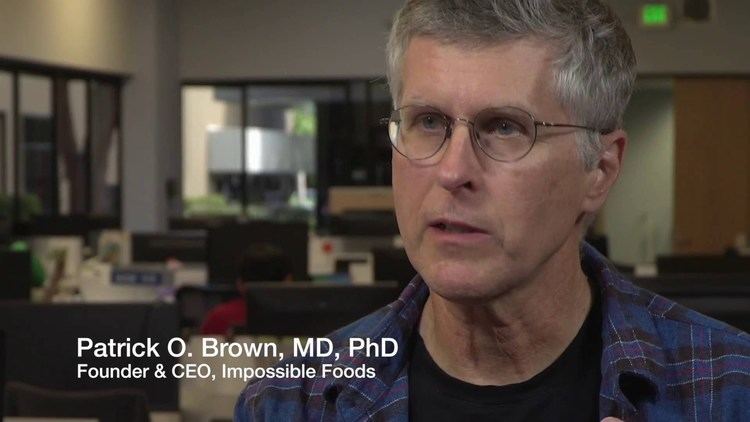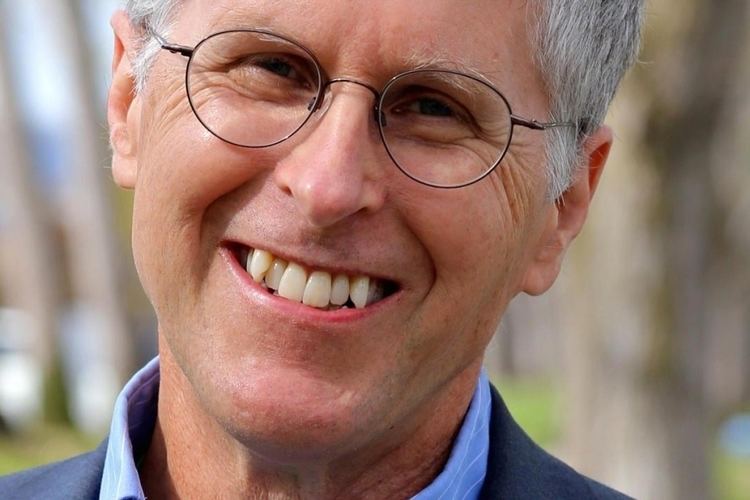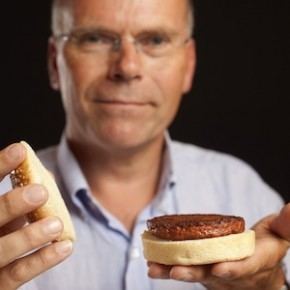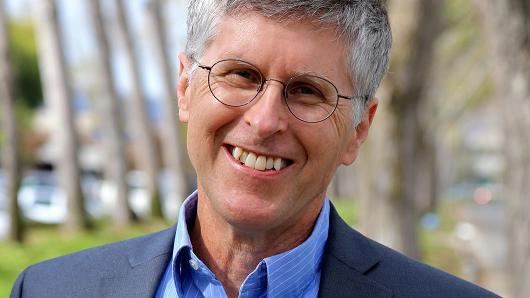Nationality American | Alma mater University of Chicago Organizations founded PLOS Name Patrick Brown | |
 | ||
Thesis Studies on DNA Topoisomerases (1980) Known for DNA microarraysPublic Library of Science Education University of Chicago (1982), University of Chicago (1980), University of Chicago (1976) Awards NAS Award in Molecular Biology Similar People David Botstein, Michael Eisen, Joseph DeRisi, Harold E Varmus, Daniel Kraft | ||
Technology Pioneer 2016 - Patrick O Brown (Impossible Foods)
Patrick "Pat" O'Reilly Brown, (born 1954) is chief executive and founder of Impossible Foods Inc. and professor emeritus in the department of biochemistry at Stanford University. Brown is co-founder of the Public Library of Science, inventor of the DNA microarray, and a former investigator at Howard Hughes Medical Institute.
Contents
- Technology Pioneer 2016 Patrick O Brown Impossible Foods
- Education
- Academic Career
- Corporate Career
- Awards
- References

Education

Brown received each of his degrees from the University of Chicago, including his B.S. in 1976 and M.D. in 1982. His Ph.D., granted in 1980 while under the guidance of Nicholas R. Cozzarelli, involved the study of DNA topoisomerases.
Academic Career

After getting his medical degree in 1982, Brown completed a 3-year pediatric residency at Children’s Memorial Hospital in Chicago but decided he preferred research to a daily patient practice. In 1985, Brown took a 3-year postdoctoral fellowship with J. Michael Bishop and Harold Varmus at University of California, San Francisco. Under the mentorship of Bishop and Varums (who shared the 1989 Nobel Prize in Medicine for their discoveries about how genes can ignite cancerous tumors), Brown's research focused on developing and using the DNA microarray to study the gene expression patterns associated with especially cancer; he also wrote and published a study showing how the AIDS virus invades the genetic apparatus of cells and plants its destructive DNA, which helped point drug designers in the direction of an effective compound to fight the disease.

In 1988, Brown became an investigator of the Howard Hughes Medical Institute and an Associate Professor in the Department of Biochemistry at Stanford University School of Medicine. For the next half-decade, Brown worked with Stanford engineers to design a robot that would simplify the building what he called “home-brew” microarrays. Brown developed a robotic dispenser that could deposit minute quantities of tens of thousands of individual genes onto a single glass slide, or "gene chip." By flooding the slide with fluorescently labeled genetic material derived from a living sample, a researcher could see which genes were being expressed in cells.

After the robot was built, Brown published a “how-to” manual on the Web that helped these robotic devices become standard equipment in life science labs throughout the world. Microarray technologies are now widely used for comparing other genome features among individuals and their tissues and cells, providing information on disease subcategories, disease prognosis, and treatment outcome.
Starting in the late 1990s, Brown began publicly voicing concern over what he called "a fundamentally flawed process of scientific publishing," in which academics typically published results of publicly funded research in private, commercial publishing houses that charged subscription fees for access to journals. “We viewed this entire process as being patently unfair. Not only were scientists in poor countries being denied access to the latest and best information out there, but the public who supports this research was being denied access as well. We felt there simply had to be a better way to do it," Brown told a University of Chicago medical journal.
Brown began collaborating with other scientists, including Varmus (then head of the National Institutes of Health) and Michael Eisen of Lawrence Berkeley National Laboratory, to overhaul the scientific and medical publishing systems to make papers available on the rapidly developing Internet platforms such as Usenet and the World Wide Web. "Why should publishers be able to control what I can do with information that was published by my scientific colleagues whose motivation was exactly to have their discoveries contribute to future discoveries? ... We had already existing tools that we could use to so to speak hyperlink things so that you could reorganize information in systematic ways, but they weren't really being exploited by the conventional scientific literature," Brown said in an interview with BioMedCentral Biology. The magazine Nature reported that the scientists' open-access movement could "spell the end for many print titles"; Brown called subscription-based scientific journals "anachronisms."
In 2001, Brown co-founded the Public Library of Science (PLOS) to make published scientific research open access and freely available to researchers in the scientific community. Funded by a grant from the Gordon and Betty Moore Foundation, the non-profit organization advocated for designing alternative systems to fund for scientific publishing.
In 2002, Brown was elected to the United States National Academy of Sciences, identifying him as one of the top 2000 scientists in the nation. He is a member of the Institute of Medicine and a Fellow of the American Association for the Advancement of Science.
Corporate Career
In 2009, Brown took an 18-month sabbatical where he considered how to spend the rest of his career. Brown decided that the world's largest environmental problem, and the problem where he could have the most impact, was animal farming. He organized a conference to raise awareness of the problem. But the National Research Council workshop, called "The Role of Animal Agriculture in a Sustainable 21st Century Global Food System,” had minimal impact; soon after, he decided the best way to reduce animal agriculture was to offer a competing product in the free market.
By the end of his sabbatical, Brown had articulated the first steps of his business plan and began to identify a small team of scientists to determine precisely why meat smells, handles, cooks and tastes like meat. Brown said he had a "hunch" that the key to meat's unique taste was its high abundance of heme, an iron-containing molecule in blood that carries oxygen and is found in all living organisms. Brown theorized that, if he could generate large amounts of heme from plant sources, he could recreate the taste of animal meat.
Brown tested the hunch by digging up clover roots, which for the plant kingdom contain high amounts of heme. "I dissected them off with a razor blade then blended them up just to see what I could extract. I was just poking around, feasibility-testing some ideas. I got to a point where, though I didn’t have much data, I’d enough to go and talk to some venture-capital companies — of which there are a ridiculous number in Silicon Valley — and hit them for some money,” Brown told The Sunday Times. Brown raised a Series A round of $9 million from Khosla Ventures and founded Impossible Foods in July 2011. Brown and his team spent five years researching and developing the Impossible Burger, which launched in restaurants in 2016. Impossible Foods is also working on plant-based pork, chicken, fish and dairy products made without any animals.
Awards
In 2002 he received a Takeda award, recognizing his work in "the development of DNA microarrays with pre-synthesized DNA probes and the promotion of the technology by releasing the production methods on the Internet."
In 2005 he received the Curt Stern Award for his contributions to the development and application of gene-based expression microarrays.
In recognition of Brown's pioneering work in the development of microarrays and the diverse applications of this technology in genetic research, the Association of Biomolecular Resource Facilities (ABRF) selected him for the ABRF 2010 Award.
He is a co-founder of the Public Library of Science, an advocate of open access publishing, and a member of the Canary Foundation science team.
